
Condors,condor,california condor,condors
birdfotos.com

August 21 & 22 2004
First some information.
Scientific Name - Gymnogyps californianus
Family - Cathartidae [ New World Vultures ]
Wingspan - 9.5 feet
Life Span Possibly 60 years
Condors reach sexual maturity & attain adult plumage & coloration by 5 or 6 years old.
Generally the immature Condor has a dark or blackish head instead of the adult bird's reddish hear.
However, the adult Condor when cold can cause a black sheath to cover up its neck and head.
There is no viable difference between the makes and the females.
Unless your a Condor the way to tell the difference is with a blood test.
Condors are strict scavengers.
They find their food visually, they often will investigate the activity of other scavengers such as Eagles,Coyotes, Ravens.
If the Condors are flying overhead note the wing tag number.
Then you go to the Peregrine Fund Condor Project on the web at; http://www.peregrinefund.org
and learn all about the Condor(s) you may have seen.
******************************************************
Last year a nest here failed. The park biologist repelled down some 170 feet or more to this cave entrance to see what possibly may have gone wrong. Remains found in the nest cave were from the pleistocene area which in geologic terms is from 10,000 to about two million years ago. The juvenile and adult condor remains were Carbon 14 dated from 11,000 to 23,000 years ago. Remains of of at least three extinct mammals were also found in the cave, an extinct horse, bison, and brush ox.
I don't know nor did I ask if I could put down the names of the people that told this so I won't unless they ask me to.
**************************************************************
The Condor nest site revisited on Hopi Point South Rim of the Grand Canyon.
If you don't have extreme patience and at least a 16 power binoculars or 40 to 60 power scope your not going to see much.
Location

This site does have 2 porta-pottys.
*************************************
A corrected viewing distance has been established.
The nest or cave entrance is 5,150 ( five thousand one hundred fifty ) feet from the east rim of Hopi Point viewing area.
Seeing it through a scope, or binoculars, is hard enough, but trying to a photograph it is much more difficult.
Camera used, Nikon f/4, Sigma 600 mm lens with 2, 2X tele-converters, 1, 1.4X tele-converter,
I think that brings the lens magnification up to 3,360 millimeters.
Film, Fuji 1600 Superior, shutter operated via radio a controlled devise. Photo quality, not good.
*******************************************
This image is of the female parent bird #119 or just 19 as it is flying into the cave opening.
I have put an orange arrow at the tip of each wing to you see the bird.

*******************************************
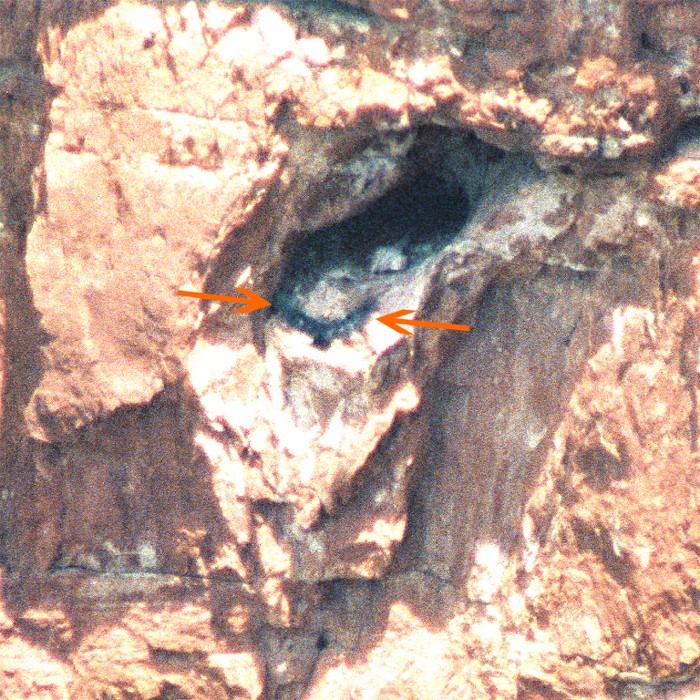
****************************************************
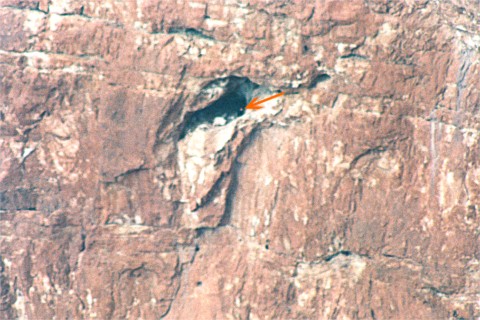
****************************
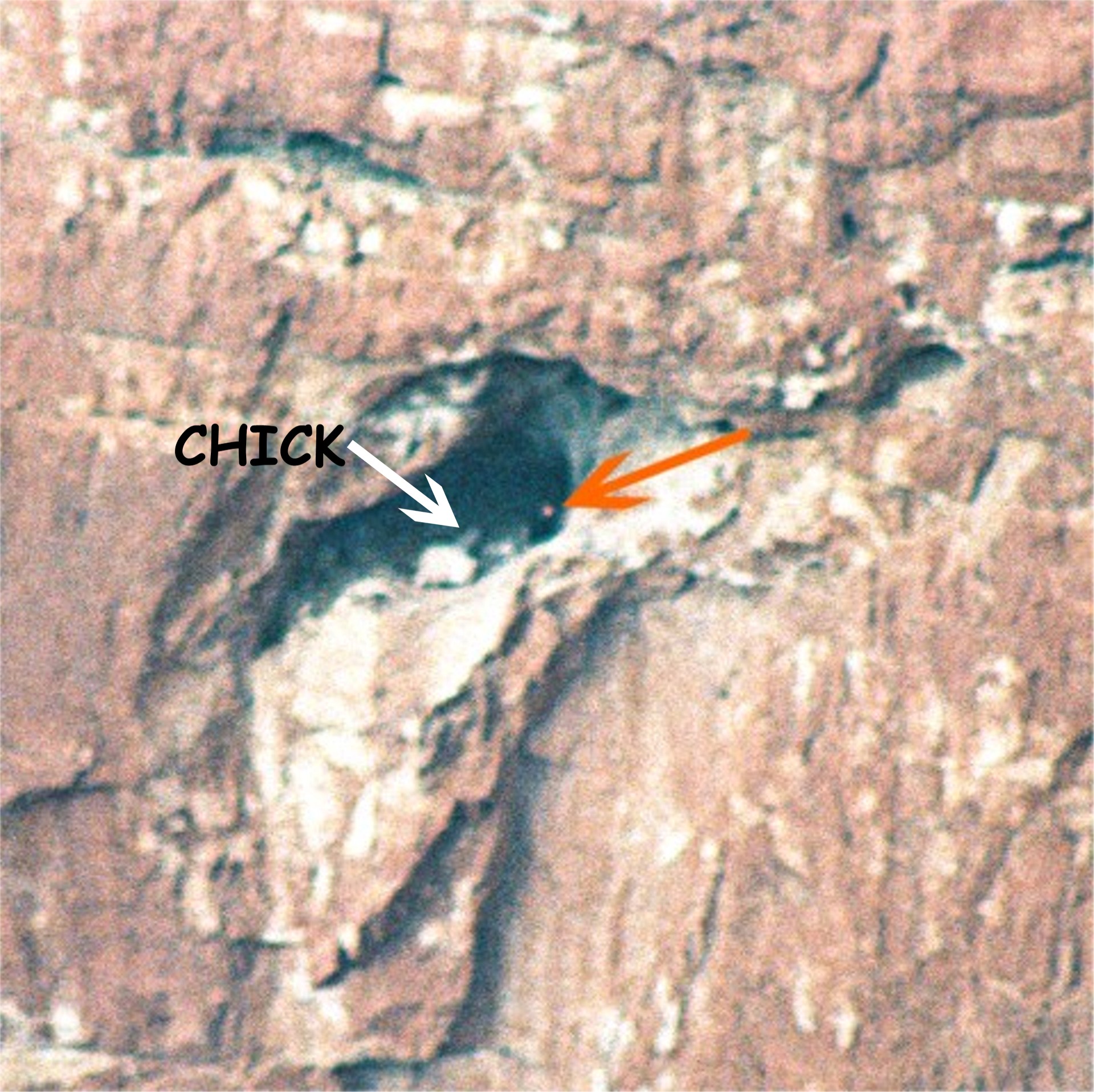
The 2 images above are of the parent bird getting ready to leave the cave area.
The Young chick is on the rock just to the left & forward of the parent bird.
************************************
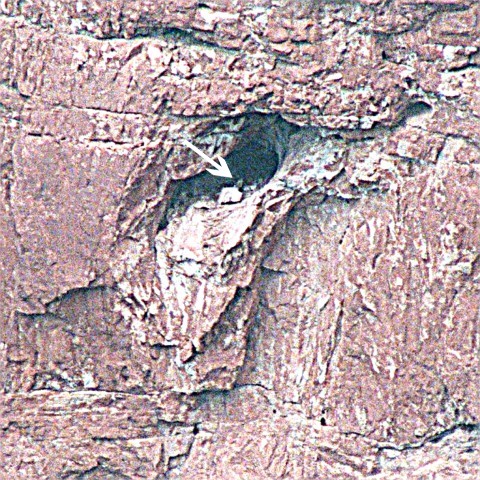
Chick on the rock.
*******************************************
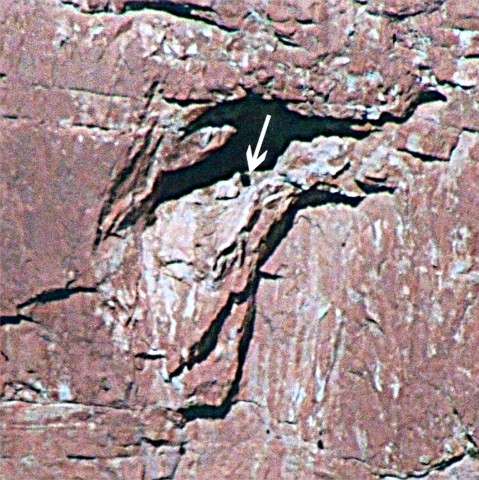
Chick off the rock.
*****************************
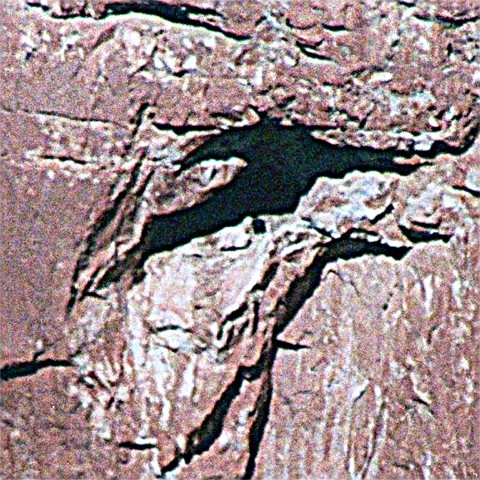
Chick off rock with wings open.
***********************************
Camera used, Nikon f/4, Sigma 600 mm lens with 2, 2X tele-converters, 1, 1.4X tele-converter,
I think that brings the lens magnification up to 3,360 millimeters.
Film, Fuji 1600 Superior, shutter operated via radio a controlled devise. Photo quality, not good.
*****************************************